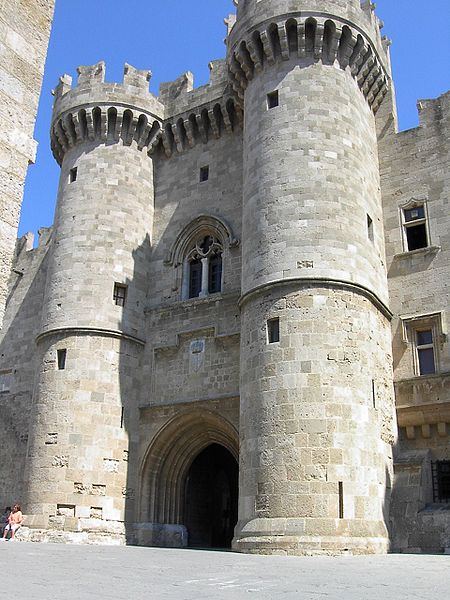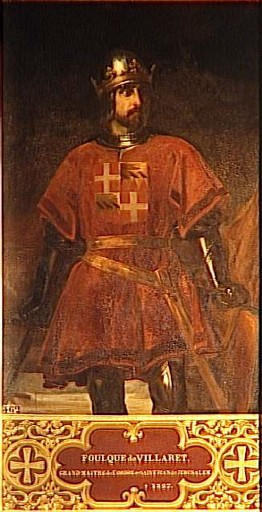On 15 August, 1310, under the leadership of Grand Master Foulques de Villaret, the Knights of St. John captured the island in spite of the Greek emperor, Andronicus II.
The Knights of Rhodes, the successors of the Hospitallers of St. John, were distinguished from the latter in many ways. In the first place, the grand master of the order was thenceforward a temporal sovereign in that island, which constituted a true ecclesiastical principality, under the nominal suzerainty of the Emperors of the East. Secondly, although Villaret’s first care was to build a new infirmary, the care of the sick took a secondary place, as the members of the order had scarcely occasion to devote themselves to any save the members of the community. The name knights then prevailed over that of hospitallers. This character was accentuated by the fusion of the Hospitallers with the remaining Knights Templars subsequent to the suppression of the latter (1312). This fusion at the same time increased the wealth of the order, to which the pope assigned the property of the Templars in every country except Aragon and Portugal. In France, where Philip the Fair had sequestrated this property, the order obtained restitution only by paying large indemnities to the king. From this time its organization took its definitive form, the whole body being divided into tongues, priories, and commanderies. The tongues, or nations, were eight in number, each having its own bailiff; and one of the eight supreme dignities was reserved to each tongue — to Provence, that of the grand commander; to Auvergne, that of marshal; to France, grand hospitaller; to Italy, admiral; to Aragon, standard-bearer; to Castile, grand chancellor; to Germany, grand bailiff; to England, turcoplier. (On these dignities see .) The grand master might be elected from any of the various tongues; he exercised supreme authority, but under control of the grand chapter and with the aid of several councils. Each tongue was subdivided into priories, and the head of each priory had the right to receive new knights and to visit the commanderies. The priories number twenty-four, and the commanderies, which were subdivisions of the priories, 656. All these posts were held according to seniority, the commanderies after three campaigns, which were known as “caravans”.

Main entrance to Palace of the Grand Master of the Knights of Rhodes on the Island of Rhodes, Greece.
A most important change in the character of the order was the transformation of the knights into corsairs. The piracy practiced by the Muslims was the scourge of the Mediterranean and especially of Christian commerce. The Knights of Rhodes, on their side, armed cruisers not only to give chase to the pirates, but to make reprisals on the Turkish merchantmen. With increasing audacity they made descents on the coast and pillaged the richest ports of the Orient, such as Smyrna (1341) and Alexandria (1365). However, a new Muslim power arose at this period — the Ottoman Turks of Iconium — and took the offensive against Christianity. After the fall of Constantinople, Mahomet II directed his attention to the task of destroying this den of pirates which made Rhodes the terror of the Muslim world. Henceforth the order, thrown on the defensive, lived perpetually on the alert. Once, under its grand master, Pierre d’Aubusson, it repulsed all the forces of Mahomet II in the siege of 1480. In 1522 Solyman II returned to the attack with a fleet of 400 ships and an army of 140,000 men. The knights sustained this great onslaught with their habitual bravery for a period of six months under their grand master, Villiers de l’Isle Adam, and capitulated only when their supplies were completely exhausted. Their lives were spared, and they were permitted to withdraw. Solyman II, in homage to their heroism, lent them his ships to return to Europe. They dispersed to their commanderies and begged Charles V to grant them the island of Malta, which was a dependency of his kingdom of Sicily, and this sovereignty was granted them in 1530, under the suzerainty of the kings of Spain.
_______________________
Also of interest:


















